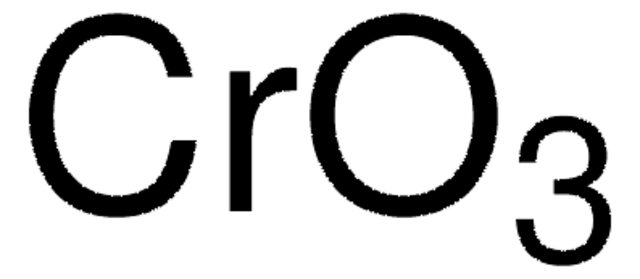PHR1557
Diclorometano
Pharmaceutical Secondary Standard; Certified Reference Material
Sinonimo/i:
Cloruro di metilene
About This Item
Prodotti consigliati
Grado
certified reference material
pharmaceutical secondary standard
Livello qualitativo
agenzia
traceable to USP 1601441
Densità del vapore
2.9 (vs air)
Tensione di vapore
24.45 psi ( 55 °C)
6.83 psi ( 20 °C)
CdA
current certificate can be downloaded
Temp. autoaccensione
1223 °F
Limite di esplosione
22 %
Confezionamento
ampule of 3x1.2 mL each
tecniche
HPLC: suitable
gas chromatography (GC): suitable
Indice di rifrazione
n20/D 1.424 (lit.)
P. ebollizione
39.8-40 °C (lit.)
Punto di fusione
−95 °C (lit.)
Densità
1.325 g/mL at 25 °C (lit.)
applicazioni
pharmaceutical (small molecule)
Formato
neat
Temperatura di conservazione
2-30°C
Stringa SMILE
ClCCl
InChI
1S/CH2Cl2/c2-1-3/h1H2
YMWUJEATGCHHMB-UHFFFAOYSA-N
Cerchi prodotti simili? Visita Guida al confronto tra prodotti
Descrizione generale
Pharmaceutical secondary standards for application in quality control, provide pharma laboratories and manufacturers with a convenient and cost-effective alternative to the preparation of in-house working standards.
Applicazioni
Risultati analitici
Altre note
Nota a piè di pagina
Prodotti consigliati
Avvertenze
Warning
Indicazioni di pericolo
Consigli di prudenza
Classi di pericolo
Carc. 2 - Eye Irrit. 2 - Skin Irrit. 2 - STOT SE 3
Organi bersaglio
Central nervous system
Codice della classe di stoccaggio
6.1C - Combustible acute toxic Cat.3 / toxic compounds or compounds which causing chronic effects
Classe di pericolosità dell'acqua (WGK)
WGK 2
Punto d’infiammabilità (°F)
Not applicable
Punto d’infiammabilità (°C)
Not applicable
Scegli una delle versioni più recenti:
Certificati d'analisi (COA)
It looks like we've run into a problem, but you can still download Certificates of Analysis from our Documenti section.
Se ti serve aiuto, non esitare a contattarci Servizio Clienti
Possiedi già questo prodotto?
I documenti relativi ai prodotti acquistati recentemente sono disponibili nell’Archivio dei documenti.
I clienti hanno visto anche
Protocolli
GC Analysis of Class 2 Residual Solvents on OVI-G43
US EPA Method TO-17: GC Analysis of Volatiles on VOCOL® after Collection/Desorption using Air Toxics Tube
US EPA Method 8260: GC Analysis of Volatiles on SPB®-624 after Purge & Trap using "K" Trap, Fast GC Analysis
Il team dei nostri ricercatori vanta grande esperienza in tutte le aree della ricerca quali Life Science, scienza dei materiali, sintesi chimica, cromatografia, discipline analitiche, ecc..
Contatta l'Assistenza Tecnica.











